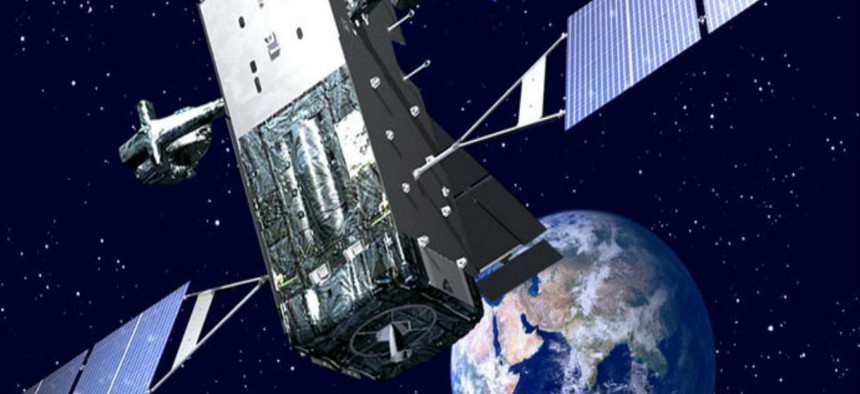Rad-hard chips could hasten small sats
A payload specialist and chip researcher demonstrate radiation hardened power conversion devices.
Among the emerging chip technologies underpinning smaller satellites and "disaggregated" space systems are low-power, radiation-hardened circuits that can withstand the unforgiving space environment while extending the lifetime of new platforms far beyond previous generations of satellites.
The shift away from multi-billion-dollar spy, communications and navigation satellites to constellations of smaller systems that collectively can deliver comparable ISR capabilities has fueled research aimed at improving the guts of new space platforms.
The latest example comes from the Belgian chip research consortium Imec (Interuniversity Micro Electronics Center). Imec partnered with satellite payload developer Thales Alenia Space to demonstrate the radiation resistance of power conversion devices fabricated on a gallium nitride-on-silicon substrate. The partners reported this week that the GaN-on-Si power devices based on Imec's chip architecture withstood heavy ion and neutron irradiation with what they claim is no degradation in performance.
GaN-on-Si circuits operate at higher voltages, frequencies and temperatures than conventional silicon chips. Those attributes along with radiation hardness make them ideal candidates for satellite power conversion devices since they exhibit less power loss when converting, for example, sunlight into electricity.
Thales Alenia Space, the Franco-Italian aerospace manufacturer and electronics supplier to the European Space Agency (ESA), specializes in wide band gap devices such as GaN-on-Si that deliver much better performance that conventional semiconductors. Those performance increases along with resistance to radiation represents "an important step [on] the way to space-based power conversion applications," the partners said.
Gallium nitride substrates are "a critical technology for future space missions with a wide range of potential applications, including smaller size, higher efficiency DC-DC power conversion subsystems," added Andrew Barnes, an ESA technical manager overseeing the project.
Imec said the next step in fielding the rad-hard chip technology is transitioning fabrication of the relatively expensive satellite components to existing infrastructure used to make conventional silicon chips. Those include adoption of standard 200-millimeter wafer substrates and other manufacturing tools used to drive down costs by increasing chip yields.
"We've succeeded in making GaN devices on larger wafer diameters than used today, which brings lower cost perspectives for the second generation of GaN-on-Si power devices," noted Rudi Cartuyvels, Imec's executive vice president.
The chip research institute's rad-hard approach also addresses problems related to device integration: As features sizes continue to shrink on satellite components—a key step toward deploying small sats—those devices become more susceptible to damaging radiation effects.
Hence, Imec irradiated its next-generation GaN-based power devices with heavy ions of xenon and neutrons. Ion and neutron fluxes are the primary cause of damaged electronic circuits in satellites. The researcher reported that its irradiation tests revealed "no permanent degradation" of circuit characteristics, no damage to circuit gates and no changes in threshold voltages for power devices.
The partners are next focusing on applying the technology to shrinking the size of satellites and boosting the efficiency of DC-DC power conversion subsystems.




